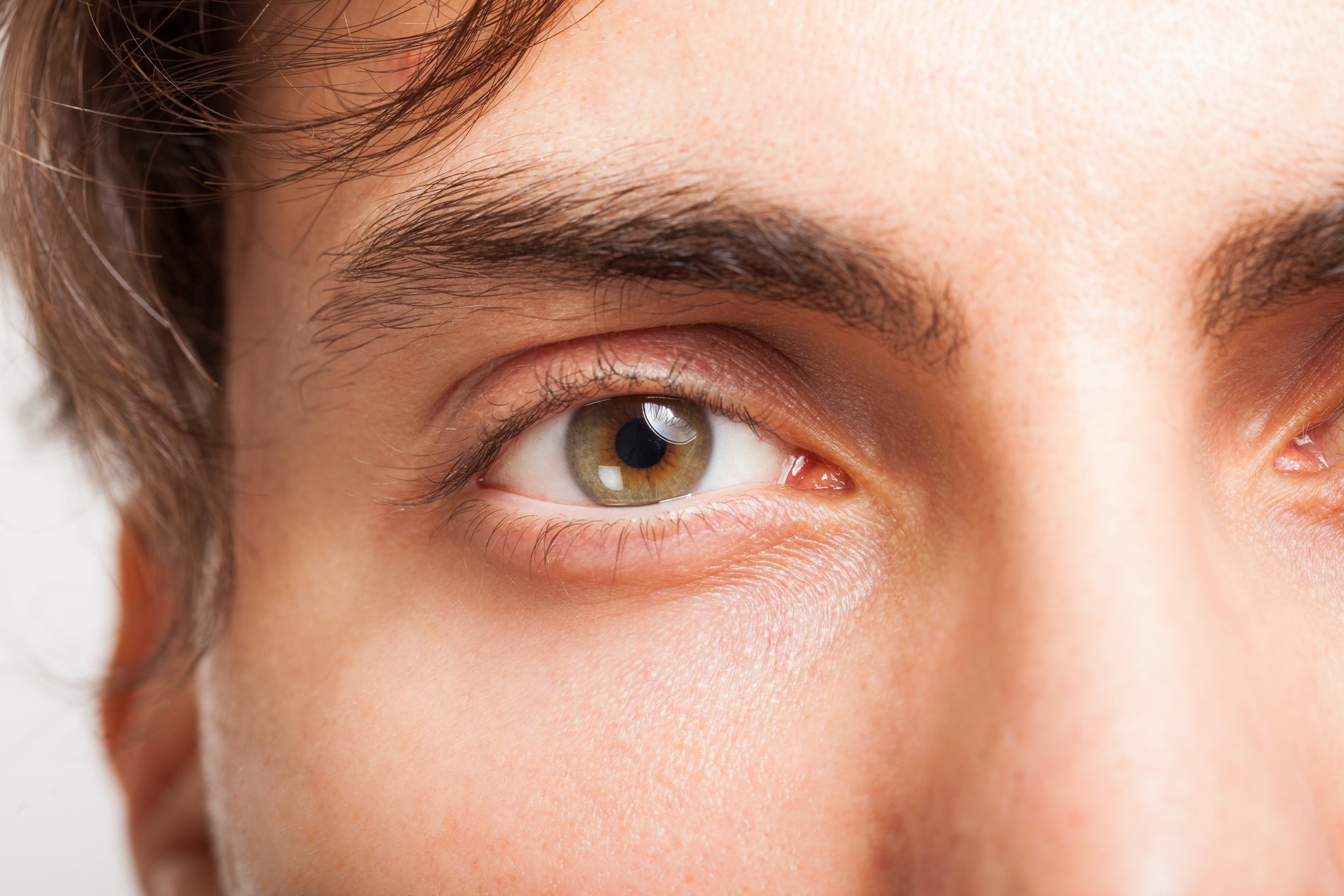Social media is full of bizarre and questionable trends. The latest involves men trimming or shaving off their eyelashes in order to appear more “masculine”.
This is yet another instance where leaving the body to look after itself is probably for the best. Our lashes aren’t just aesthetic. They play an important role in protecting our eyes. Trimming them could put you at greater risk of experiencing infections.
Eyelashes are classed as terminal hair. This means they’re present since birth. We have between 90 and 160 eyelahes on our upper eyelid and around 75 to 80 on our lower lids. They also grow pretty quickly too – at a rate of between 0.12-0.14mm a day.
While most people focus on the aesthetics of the eyelashes – with plenty of products out there claiming to change their colour, length and thickness – eyelashes actually have important functional roles. They keep dirt and particles out of the eyes, and also deflect air away from the cornea.
This helps stop the outer surface from drying out – preventing irritation and making it so we don’t have to blink as much to keep our eyes moist. The ideal length of an eyelash is about one-third the width of the eye.
Trimming your eyelashes is going to increase the risk of infection. There’s even a risk you may catch an infection while trimming the lashes themselves. Since lashes catch particles on them, if a trimmed lash falls back into your eye it could lead to an infection.
There are cases of this happening even when an eyelash has fallen out naturally, leading to infections and ending up inside compartments of the eye. Rogue eyelashes and the particles on them can cause anything from conjunctivitis (better known as “pink eye”) though to blepharitis (inflammation of the eyelid).

At the base of the lashes are the meibomian glands. These produce an oily substance rich in fat, called meibum. This substance prevents tears from evaporating quickly, keeping the surface of the eye moist. These secretions also run along the lashes, keeping them healthy and helping to catch small particles so they don’t get into the eye.
Cutting your eyelashes will reduce the ability to keep particles out of the eye and potentially disturb how well the meibomian glands function, as there’s less eyelash for meibum to sit on and catch particulates. This disruption increases the risk of infections such as keratitis (inflammation of the cornea).
Other common eyelid infections that can occur are styes or chalazions.
Styes result from an infection in the base of the eyelash (hair) follicle. It presents as a swollen, tender, red lump that may have yellow discharge coming out of it and crustiness along the eyelid. The most common cause of a stye is a staphylococcus aureus, a bacteria that lives on the skin and in the nose of many people.
A chalazion is the blockage of the meibomian gland, these swellings are usually painless and not tender to touch. They are most commonly seen on the upper eyelid.
Any interference with your eyelashes and their length increases the risk of particles getting into the eye and causing an infection or blocking the glands.
Our eyelashes and their length also play an important role in closing our eyes when needed to protect the eyeball. This reflex is activated when the lashes “feel” something touch their very sensitive nerve fibres. Trimming your eyelashes reduces the time that this reflex has to go from detection by the eyelashes, to the brain and then back to the muscles of the eyelid to close it and protect the eyeball. If you cut your eyelashes, you may be at greater risk of things getting in your eye – such as bugs or dust.
Should you ever trim your lashes?
There are some conditions that cause the eyelashes to grow abnormally. And in some cases, they may need to be removed or trimmed to prevent infections.
For instance, some people have abnormally long eyelashes – termed trichomegaly. This is considered where length is more than 12mm or the eyelashes are abnormally curly, pigmented or thick.
It isn’t known if naturally longer lashes increase the chance of eye problems – but extending your lashes artificially increases infection risk due to the chemicals used in the adhesives.
Certain drugs may also cause eyelashes to grow excessively – such as the anti-epilepsy drug topiramate.
Some people can have double rows of eyelashes – actress Elizabeth Taylor was one. This condition is typically caused by a rare condition called distichiasis, which affects one in 10,000 people. Some people can even grow a third and fourth row of eyelashes.
.jpeg)
Distichiasis causes red, watery or irritated eyes, alongside pain, light sensitivity and even scarring of the cornea. Treatment can be anything from plucking the additional lashes through to cryotherapy (freezing the eyelash follicles to prevent future growth) or laser ablation to prevent them growing back entirely.
Trichiasis causes the eyelashes to grow inwards towards the eye. Inward growing eyelashes can cause irritation of the eyeball and, if untreated, permanent damage. It can also cause blepharitis.
In this case, a person would need to use epilation to remove the eyelashes (though they will grow back in four to six weeks). A more permanent solution is laser removal to prevent the eyelashes from regrowing.
Eyelashes play an important part in protecting our eyes. They’re best left alone to do their thing, and should only be removed if a medical condition is causing them to grow abnormally or leading to irritation. But in those instances, it’s best to seek a doctor’s help to avoid causing yourself any harm.
Adam Taylor is a Professor of Anatomy at Lancaster University.
This article was originally published on The Conversation and is republished under a Creative Commons licence. Read the original article



